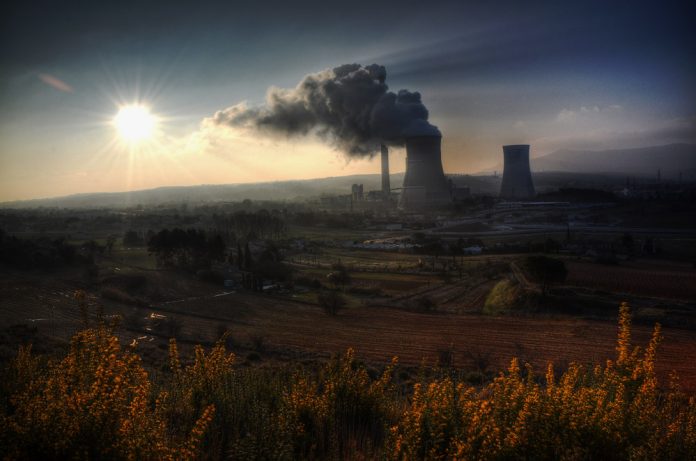Two weeks after the European elections, META’s here to help new MEPs and potential Commissioners with five green ideas that could blossom in the next five years.
A European Green New Deal
The European Union needs to get the ball rolling on a new environmental action programme – or European ‘Green New Deal’.
In 1972 the European Community adopted its first ever Environment Action Programme. There have been six more since and an 8th Environment Action Programme – or ‘8EAP’ – is now due.
These frameworks are used by the European Union to define environmental commitments. The seven previous versions of this programme have been successful in limiting environmental damage, as shown in the evaluation of the latest programme, published during the Green Week 2019.
In the USA Congresswoman Alexandria Ocasio-Cortez is pushing for an American Green New Deal.
European campaigners now want to turn the next Environment Action Programme into something similar, not just to limit damage, but to actively contribute to a better future for people and nature.
New European Commission Vice-Presidents for…
Ahead of the elections a poll showed that 82% of EU citizens would think about the environment, animals and nature, when casting their ballot. The subsequent ‘green wave’ has shown how important these issues were for voters.
The European Commission plays a crucial role in the lawmaking process of the European Union. Various Vice-President positions already exist in the Commission, but the Environment and Climate roles are not yet represented at this level.
Many now expect the new Commission to better reflect the importance and urgency of green issues by ensuring they are always dealt with at the top table.
EEB Secretary General Jeremy Wates told META: “It’s time for the European Union to live up to our collective responsibility to future generations. This means the President of the Commission taking personal responsibility for sustainable development and Vice-Presidents being assigned to climate and nature”.
A Sustainable Development Goals strategy
17 goals have been developed by the United Nations to achieve a sustainable future for all. These goals, called the ‘Sustainable Development Goals’ – or ‘SDGs’ – target all aspects of sustainability, from poverty to clean oceans.
Although the United Nations set the Sustainable Development Goals back in 2015, awareness about and knowledge of them amongst European citizens is still patchy.
Almost nine out of 10 EU citizens have either not heard about the SDGs (58%) or have heard about them but do not know what they are (29%), according to a survey conducted by Eurobarometer, the EU’s polling agency.
Campaigners say a dedicated EU strategy is needed to deliver on the SDGs.
A letter co-initiated by the EEB will be published next week, calling for the goals to be at the heart of every EU strategy and a new report entitled ‘Falling through the cracks: Exposing inequalities in the EU and beyond’ will be published and shared later this month.
The report, focused primarily on ‘SDG 10: Inequality’, charts visible interlinkages between economic inequalities, discrimination, and social exclusion, both within and outside the EU, caused by unfair tax, investment and aid priorities.
Net zero emissions
At the end of last year the European Commission presented a strategic long-term vision of achieving a climate-neutral economy by 2050. Last month eight EU countries called for net-zero carbon emissions by 2050.
Climate-neutrality and ‘net zero emissions’ are different ways of looking at how we balance remaining greenhouse gas emissions with practices that build up carbon stocks in our environment, like wetlands or planting more trees, that capture CO2.
Roland Joebstl, the EEB’s Senior Policy Officer for Energy and Climate, explains:
“We already have the key technologies we need to tackle climate change, the burning issue today is: are the politics ready to implement these changes and make decisions that will benefit the society as a whole?”
Joebstl stressed that taking action on climate has a positive outcome on many sides: “The actions that we need to take as part of climate actions have multiple benefits for the society as the whole. Healthy forests are absolutely essential for rich biodiversity, strong carbon stocks in our soils and the ability to soak up and store water.”
Over the next five years the European Union will have a major role to play in cutting greenhouse gas emissions and accelerating the transition to a climate-neutral economy.
A ‘Paris moment’ for Biodiversity
A study carried out by the world’s top nature scientists and representatives from 132 governments warned us recently that humanity faces a global environmental emergency.
The three-year assessment into the health of our planet’s ecosystems reveals the alarming extent of global biodiversity breakdown with up to one million species set to disappear within a few decades. The study proves the world is experiencing a ‘sixth mass extinction event’ – as a result of human behaviour.
According to the EEB, the study’s conclusion should be the start of a global discussion about how to tackle biodiversity loss.
One of the conclusions of the EEB’s 2018 annual conference was the need for a ‘Paris Agreement for Nature’.
Sergiy Moroz, Senior Policy Officer for Water and Biodiversity, said: “The EU must be a global leader on nature conservation by championing a global biodiversity accord – just as it did on climate change. But agreements are not enough to halt and reverse nature loss. EU policies must be coherent with nature protection and governments must be ambitious when the implement environmental laws.”
Marie-Amélie Brun is a contributor to META. She is working as a Communication Officer at the European Environmental Bureau (EEB).
The article was originally published: https://meta.eeb.org/2019/06/06/5-green-ideas-for-the-eu-in-next-5-years/

